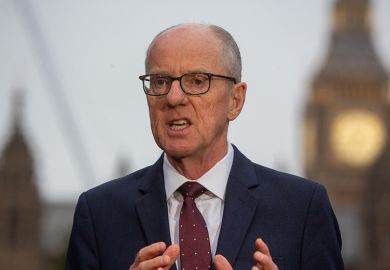Ninety-fifth and first. An album by Springsteen or Dylan, Suze Rotolo in backshot? A highway intersection as Manhattan tumbles into East Harlem?
Perhaps not. Today sees the publication of the Higher Education Policy Institute’s 95th report, but Whither Teacher Education and Training? is the first on the topic.
Teacher supply is edging into crisis. We have been here before, a number of London schools being forced to close for sessions or days around the millennium, but at that time the resource to tackle shortfalls was readily available and the size of the secondary school age cohort wasn’t about to grow by more than 20 per cent in seven years.
Part of the problem can be attributed to a breakdown in the relationship between the principal suppliers of trained teachers, the universities, and the state. Markets abhor uncertainty, and, combined with the diminishing perceptual status of the profession, some providers and some subjects have seen applicant numbers halve.
In 2016-17, 14 of the 17 secondary subjects failed to hit their Teacher Supply Model recruitment targets, and postgraduate applications for entry this September are down by a further 6 per cent. In key subjects such as mathematics and physics, at least a quarter of all lessons are taught by non-specialists, and the recruitment of modern linguists and computer scientists will become ever more challenging post-Brexit.
The Department for Education has attempted to tackle this by providing ever-more substantial bursaries – a 2:2 in geography is worth £25,000 to a postgraduate trainee – but a sceptical market, uncertain over the options of Teach First, School Direct and SCITT (School-Centred Initial Teacher Training), higher education-led and school-led, salaried and fee-paying, at best flatlines.
Flirtations continue, with an apprenticeship model next in line. It may work. Schools, like all sizeable employers, are exercised in how they may recover the new apprenticeship levy. But this is not simply a policymaker-provider relationship. The key stakeholder is the graduate, scanning potential careers and determining what attracts them.
Can we rebuild the desire to teach? With further cuts on the horizon, it is unlikely that there are sufficient resources in school budgets to “bribe” candidates into the profession, and nor are these the candidates that the profession needs to attract. The “life chances” campaign is a step in the right direction, but the message increasingly needs to be delivered to students and graduates on the ground. To invest, providers of initial teacher training also need stable mid-term allocations and an allocation system based on quality and demand, not, as has been the case in the recent past, ideology.
Teamwork is necessary, too. All schools need to accept, as a minimum, engagement in the placement programme, and take their share of responsibility for renewing the profession. And we need to invest in the quality of the working environment in schools, which is now so far behind that of many other professions.
There are strong arguments in favour of a slightly longer secondary school day, with homework being completed in class, giving all pupils equal access to resources, but freeing up teacher workloads in the evening and at weekends. We also need a better road map of teachers’ routes to career progression and greater investment in teachers’ professional development, built around a degree of constancy in (a reviewed) curriculum and assessment strategy. Supporting teacher mobility, possibly through the provision of key worker housing, is also necessary if we are to tackle significant sub-regional shortfalls.
And, finally, there is little evidence that the hundreds of millions being poured into the bursary system is working. But incoming teachers will all be paying their extra 9 per cent, doubtless fuelling industrial unrest and salary claims down the line. I have written previously on the potential merits of forgivable fees; it remains a debate worth having.
John Cater is vice-chancellor of Edge Hill University and author of the Whither Teacher Education and Training? report.
Register to continue
Why register?
- Registration is free and only takes a moment
- Once registered, you can read 3 articles a month
- Sign up for our newsletter
Subscribe
Or subscribe for unlimited access to:
- Unlimited access to news, views, insights & reviews
- Digital editions
- Digital access to THE’s university and college rankings analysis
Already registered or a current subscriber?







